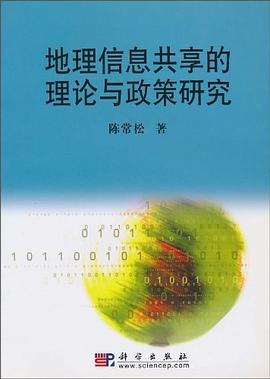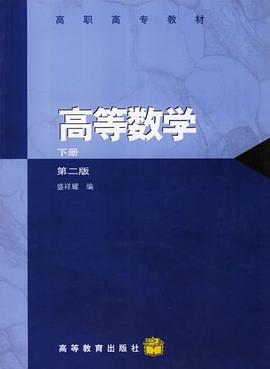PREFACE
1 INTRODUCTION AND REVIEW
1.1Historical Perspective
1.2Definitions,Derivations,and Discovery
1.3Review of Quantum Mechanics
1.4Approximate Solutionsto the Schrodinger Equation
1.5Statistical Mechanics
1.6Summary
1.7Problems
BIBLIOGRAPHY
2 THE NATURE OF ELECTROMAGNETIC RADIATION
2.1Introduction
2.2The Classical Description of Electromagnetic Radiation
2.3Propagation of Light in Matter
2.4Quantum Mechanical Aspects of Light
2.5Summary
2.6Problems
BIBLIOGRAPHY
3 ELECTRIC AND MAGNETIC PROPERTIES OF MOLECULES AND BULK MATTER
3.1Introduction
3.2Electric Properties of Molecules
3.3Electric Properties of Bulk Matter
3.4Magnetic Properties of Matter
3.5Summary
3.6Problems
BIBLIOGRAPHY
4 TIME-DEPENDENT PERTURBATION THEORY OF SPECTROSCOPY
4.1Introduction:Time Dependence in Quantum Mechanics
4.2Time-Dependent Perturbation Theory
4.3Rate Expression for Emission
4.4Perturbation Theory Calculation of Polarizability
4.5Quantum Mechanical Expression for Emission Rate
4.6Time Dependence of the Density Matrix
4.7Summary
4.8Problems
BIBLIOGRAPHY
5 THE TIME-DEPENDENT APPROACH TO SPECTROSCOPY
5.1Introduction
5.2Tim-Correlation
Functions and Spectra as Fourier Transform Pairs
5.3Properties of Time-Correlation Functions and Spectral Lineshapes
5.4The Fluctuation-Dissipation Theorem
5.5Rotational Correlation Functions and Pure Rotational Spectra
5.6Reorientational Spectroscopy of Liquids
5.7Vibration-Rotation Spectra
5.8Spectral Moments
5.9Summary
5.10Problems
BIBLIOGRAPHY
6 EXPERIMENTAL CONSIDERATIONS:ABSORPTION,EMISSION,AND SCATTERING
6.1Introduction
6.2Einstein A and B Coefficients for Absorption and Emission
6.3Absorption and Stimulated Emission
6.4Absorption and Emission Spectroscopy
6.5Measurement of Light Scattering:The Raman and Rayleigh Effects
6.6Spectral Lineshapes
6.7Summary
6.8Problems
BIBLIOGRAPHY
7 ATOMIC SPECTROSCOPY
7.1Introduction
7.2Good Quantum Numbers and Not So Good Quantum Numbers
7.3Selection Rules for Atomic Absorption and Emission
7.4The Effect to External Fields
7.5Atomic Lasers and thePrinciples of Laser Emission
7.6Summary
7.7Problems
BIBLIOGRAPHY
8 ROTATIONAL SPECTROSCOPY
8.1Introduction
8.2Energy Levels of FreeRigid Rotors
8.3Angular Momentum Coupling in Non-1∑Electronic States
8.4Nuclear Statistics and J States of Homonuclear Diatomic
8.5Rotational Absorptionand Emission Spectroscopy
8.6Rotational Raman Spectroscopy
8.7Corrections to the Rigid-Rotor Approximation
8.8Internal Rotation
8.9Summary
8.10Problems
BIBLIOGRAPHY
9 VIBRATIONAL SPECTROSCOPY OF DIATOMICS
9.1Introduction
9.2The Born-Oppenheimer Approximation and Its Consequences
9.3The Harmonic Oscillator Model
9.4Selection Rules for Vibrational Transitions
9.5Beyond the Rigid Rotor-Harmonic Oscillator Approximation
9.6Summary
9.7Problems
BIBLIOGRAPHY
10 VIBRATIONAL SPECTROSCOPY OF POLYATOMIC MOLECULES
10.1Introduction
10.2Normal Modes of Vibration
10.3Quantum Mechanics ofPolyatiomic Vibrations
10.4Group Theoretical Treatment of Vibrations
10.5Selection Rules for Infrared and Raman Scattering
10.6Rotatinoal Structure
10.7Anharmonicity
10.8Selection Rules at Work:Benzene
10.9Solvent Effects on Infrared Spectra
10.10Summary
10.11Problems
BIBLIOGRAPHY
11 ELECTRONIC SPECTROSCOPY
11.1Introduction
11.2Diatomic Molecules:Electronic States and Selection Rules
11.3Vibuational Structure in Electronic Spectra of Diatomics
11.4Born-Oppenheimer Breakdown in Diatomic Molecules
11.5Polyatomic Molecules:Electronic States and Selection Rules
11.6Transition Metal Complexes
11.7Emission Spectroscopy of Polyatomic Molecules
11.8Chromophores
11.9Solvent Effects in Electronic Spectroscopy
11.10Summary
11.11Problems
BIBLIOGRAPHY
12 RAMAN AND RESONANCE RAMAN SPECTROSCOPY
12.1Introduction
12.2Selection Rules in Raman Scattering
12.3Polarization in Raman Scattering
12.4Rotational and Vibrational Dynamics in Raman Scattering
12.5Analysis of Raman Excitation Profiles
12.6Time-Dependent Theory of Resonance Raman Spectra
12.7Raman Scattering as a Third-Order Nonlinear Process
12.8Summary
12.9Problems
BIBLIOGRAPHY
A.MATH REVIEW
A.1Vectors and Tensors in Three Dimensions
A.2Matrices
A.3Operations with Cartesian and Spherical Tensors
A.4Spherical harmonics
A.5Wigner Rotation Functions and Spherical Tensors
A.6The Clebsch-Gordan Series and 3j Symbols
BIBLIOGRAPHY
B.PRINCIPLES OF ELECTROSTATICS
B.1Units
B.2Some Applications of Gauss'Law
B.3Some Mathematical Detalis
C.GROUP THEORY
C.1Point Groups and Symmetry Operations
C.2Information Conveyed by Character Tables
C.3Direct Products and Reducible Representations
C.4Character Tables
BIBLIOGRAPHY
SUBJECT INDEX
參考資料
· · · · · · (
收起)






















